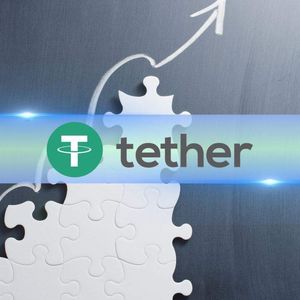

The Curious Case Of Grayscale Litecoin Trust - Overvaluation And Its Implications
Summary Grayscale Litecoin Trust allows investors to gain exposure to Litecoin through shares in the trust. LTCN is currently trading at 214% of the underlying value, which is unusual for closed-end funds. There are challenges and risks associated with the trust, including high borrowing costs and the potential for the premium to increase further. The Grayscale Litecoin Trust (LTCN) is a closed-end fund offered by Grayscale, well-known for the Bitcoin Trust that recently converted into an ETF, that allows investors to gain exposure to Litecoin, a popular cryptocurrency. Instead of buying Litecoin directly, investors can purchase shares in the trust, which holds Litecoin. The value of these shares is intended to reflect the price of Litecoin (spoiler; that's not always achieved). Closed-end funds or CEFs are a type of investment fund. Unlike open-end funds (like mutual funds or ETFs), which can issue an unlimited number of shares, CEFs issue a fixed number of shares. These shares are traded on the open market, like stocks. Unlike ETFs, their market price is usually materially different from the net asset value or NAV of the fund's holdings. Currently, the Litecoin Trust owns $5.91 in Litecoin per share (~$100 million+ total). It is selling for $12.65 per share. Grayscale calculates these figures at the end of the day. But crypto markets are 24/7. Before taking any position, always check how many cryptocurrencies/shares the fund holds and recalculate the holdings per share. The fund owns 0.08624787 Litecoin per share. What's interesting here is that The Grayscale Litecoin Trust is trading at 214% of the underlying value. If it were simply to trade at the value of the underlying that would mean it would go down 53%. Closed-end funds tend to trade at discounts to net asset value. It makes sense because there is often limited liquidity and fees can be high (2.5% per year here) During the crypto run-up in anticipation of the crypto ETF (which I wrote about here ) the altcoin funds have run up. Other Grayscale funds like MANA, FILG or GSOL trade at 4-11x the value of the stuff they're holding. It looks like easy money to short these and go long the underlying cryptocurrency. This is even more true if the underlying offers some kind of a staking yield (like Ethereum does). These kinds of relative value gaps are rare. At least, I've never seen CEF dislocations like this outside of this space. The reason these funds get dislocated like this is because U.S.-based traders have no other options. If they want exposure to altcoins like Chainlink or MANA they have to get it through Grayscale. There are regulatory constraints or institutional constraints that limit investments to Tradfi markets. There are several challenges or risks. The borrowing cost for some of these funds is very high. I've included the latest IBKR borrow costs in the table above. Currently, the borrowing cost for the Litecoin Trust is around 60%, and that's after a steep drop from over 100% until recently. Holding the cryptocurrency assets on the long side can be challenging as well. One solution is to buy European-listed ETNs. Another solution is holding cryptocurrencies through a custodian or in self-custody, which means getting more involved. The most important risk is that the multiplier or premium the fund is at could increase. When there is a massive dislocation in the prices of an asset on different markets, there is usually little reason why it couldn't be dislocated further. The maximum multiplier of market price to holdings per share observed in the data of all these Grayscale funds is approximately 59.74. November 24, 2020, the Litecoin fund had a market price per share of $500.00 and the holdings per share were only $8.37. The increasing multiplier is a key risk. Here is a chart showing historic dislocations. Note that the fund traded at a discount to its assets until recently. Grayscale Litecoin Trust price vs NAV (Grayscale) The only approach to deal with this risk, that I know of, is to have small position sizes, pay attention and manage risk actively if necessary. Having said that, the premium did come down from recent high levels. I've analyzed the data for all Grayscale funds, and on average, it took 54 days for funds to go from trading at a premium to no premium. I would be surprised if Litecoin started trading at a similar premium it achieved in 2020. Alternative ways to gain exposure are now more accessible. There are European ETFs, and more institutions have the infrastructure to own these. I looked at the data for ALL the Grayscale altcoin funds and the number of days it took for the premium to disappear, segmented by year, are as follows: 2020: 74.8 days 2021: 17.32 days 2022: 9.59 days 2023: 15.52 days The time for the closed-end funds to give up premia was shortened over time. This reversed to an extent in 2023. On average, the premium on these funds was resolving more quickly over the years, with a slight reversal in the trend in the most recent year. Catalysts for multipliers to decrease could be 1) the introduction of easily accessible alternatives into Tradfi markets or 2) crypto trading infrastructure that can easily be inserted in a fully compliant trading environment 3) crypto bear markets where multipliers could shift back to discounts or 4) cryptocurrencies sometimes have new supply entering the market through various mechanism (often to fund developers working on these things) and this can have a large effect on the price. 5) I would be surprised if the SEC allows altcoin ETFs in the foreseeable future and it is hard for me to imagine Grayscale would turn these cash cows into ETFs but turning them into ETFs would instantly erase the premium. I don't think this is a realistic catalyst, but it is the best one. Relatively large price shocks down can trigger a lot of selling by quantitative (momentum, trend, etc.) and this can reinforce initial moves. The multipliers can turn into discounts in a bear market or when there are easily accessible alternatives available in Tradfi markets. It's possible CME ( CME ) will launch futures in addition to the Bitcoin, Ether, and Bitcoin Ether ratio futures. I'm skeptical we'll see spot Ether or most other cryptos packaged in an ETF anytime soon. Another way the multipliers disappeared is because Grayscale used to run a private placement program. This was a scheme where Grayscale allowed accredited investors to invest at a price equal to the value of the holdings instead of at the market price. With the condition, the shares would need to be held for six months. As an accredited investor, you could short GBTC and send over an allocation. Hold both locked-up allocation of GBTC and a similar sized short position of GBTC for six months and bank a low-risk profit. Grayscale isn't running that program anymore. That means one way these premia could be arbed away historically is gone. Over hedging may help. The multipliers tend to increase in bull markets and decrease in bear markets. If the multiplier is increasing, it is more likely the underlying assets are trending up. By buying more underlying cryptocurrency, through ETNs or outright, that is held by the Grayscale funds you short, you could mitigate some of the multiplier expansion. I prefer to size my positions in a long/short arbitrage trade as if I'm short the VIX (maybe slightly more aggressive). To go long, it is possible to buy crypto at an exchange. There are also many European ETNs that may be available to some investors. I've used VanEck, 21Shares, and Coinshares. In Europe, they're using ETNs instead of ETFs because UCITS funds are not allowed to hold a single asset. Others are the ETC Group Hashdex, Global X, and WisdomTree. Recently, the premia has been coming down while Litecoin has mostly traded between $50 and $100 over the past year. The borrowing rate is very high ($60%+), although that is decreasing as well. That's exactly the reason I'm not shorting the Litecoin Trust. A new blowout to historically high premia seems unlikely. It is one of the key challenges here. But to pay 60%+ annualized I want to be more sure things are progressing in the right direction. If I owned this, I'd check to see if there were more efficient, yet safe, ways to get exposure to Litecoin. If the borrowing rate improves further to 50% or lower I can see myself shorting this trust and offsetting the exposure with European ETNs.













